Our 77% Less Plastic Study: February 2022 Update
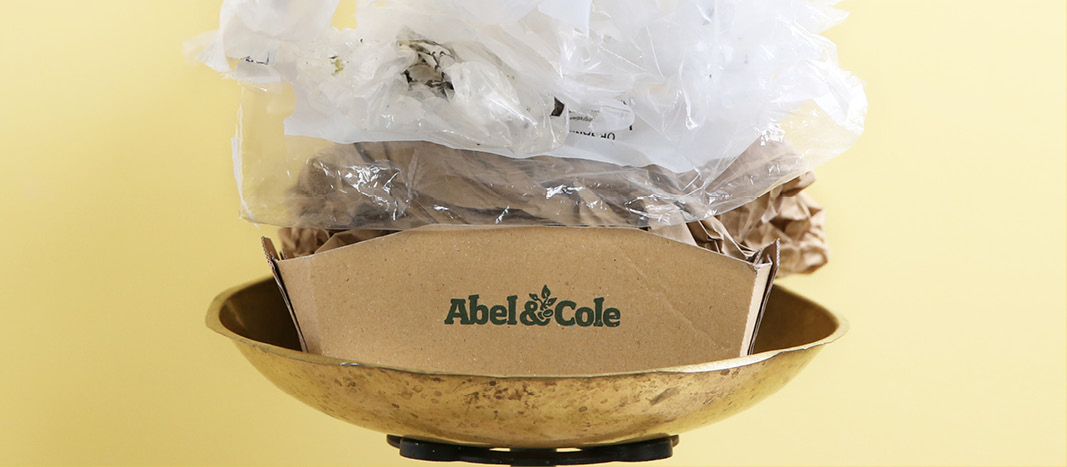
The first part of our study, conducted in August 2021, compared the packaging used in our most popular, weekly, organic Fruit & Veg Box (our Medium Fruit & Veg Box), versus the packaging used for the same organic produce from Tesco, Sainsbury’s, Ocado and Waitrose. We wanted to see how much plastic, paper and other forms of packaging were being used by each of these supermarkets. You can read more about our August 2021 study specifically, and see the data sets for this study, here.
The second part of our study was conducted in February 2022 – once again, it compared the packaging used in our Medium Fruit & Veg Box, versus the packaging used for the same organic produce from Tesco, Sainsbury’s, Ocado and Waitrose. However, this time, the study was conducted by the plastic campaign group Everyday Plastic. This has not only provided a validated result from a respected third party, but also a useful snapshot of how the amount of packaging we use can fluctuate throughout the year. Seasonal produce often requires packaging in different ways. Salad leaves, for example, typically require more packaging than other vegetables, so that they can be delivered to our shoppers fresh and in the best possible condition.
Having completed both of these studies, we were then able to combine their results to generate a final percentage figure for the amount of plastic in our boxes; one that even more accurately represents our packaging use across the year.
For both our August 2021 and February 2022 studies, one Medium Fruit & Veg Box was ordered for four consecutive weeks (in the case of the February 2022 study, from Monday 7th February – Friday 4th March 2022). Knowing what would be arriving in our boxes on these dates, we were able to order the same produce online from Tesco, Sainsbury’s, Ocado and Waitrose.
To ensure that the study was as fair as possible, we selected our produce for comparison in the following priority order:
1. Where there was an organic, own-brand option available, this was selected first.
2. Where there was no organic, own-brand option available, the closest organic option (with regard to weight) was selected.
3. Where there were two versions of the same weight available, the cheapest, organic option was chosen.
4. In the small number of cases where there was no organic version of the produce available, we ordered the non-organic version, following the same rules as above, i.e. own-brand option first, followed by the closest in weight, followed by the cheapest option.
Tesco, Sainsbury’s, Ocado and Waitrose all offer the option to have produce delivered without plastic bags, while we deliver in returnable, reusable carboard boxes. For this reason, we did not measure the in-transit packaging used in each delivery. Instead, we only weighed the packaging of each individual foodstuff, i.e. we weighed the wrapping that apples were packed in, rather than the plastic bag that the shop was delivered in.
Over the four weeks, we weighed all of the produce on the same set of digital scales, which were set up in the same place each week. We weighed all of the packaging in grams, to the nearest 0.1g. Our weights and measurements included all food labels and any use of elastics.
All types of plastic packaging were grouped together under the collective heading of ‘plastic’. Some of the plastic samples compared in the study had a ‘home compostable’ label. But as recycling and composting varies widely depending on the council collecting the packaging, we have treated all of these supermarket packaging samples, including our own, as plastic.
The following items were compared across four weeks in February 2022. You can find a list of the produce compared in our August 2021 study here.
For complete transparency, we have highlighted where we were unable to secure exact matches for our products; either by virtue of the produce from other supermarkets not being organic, a like-for-like substitution, or both.
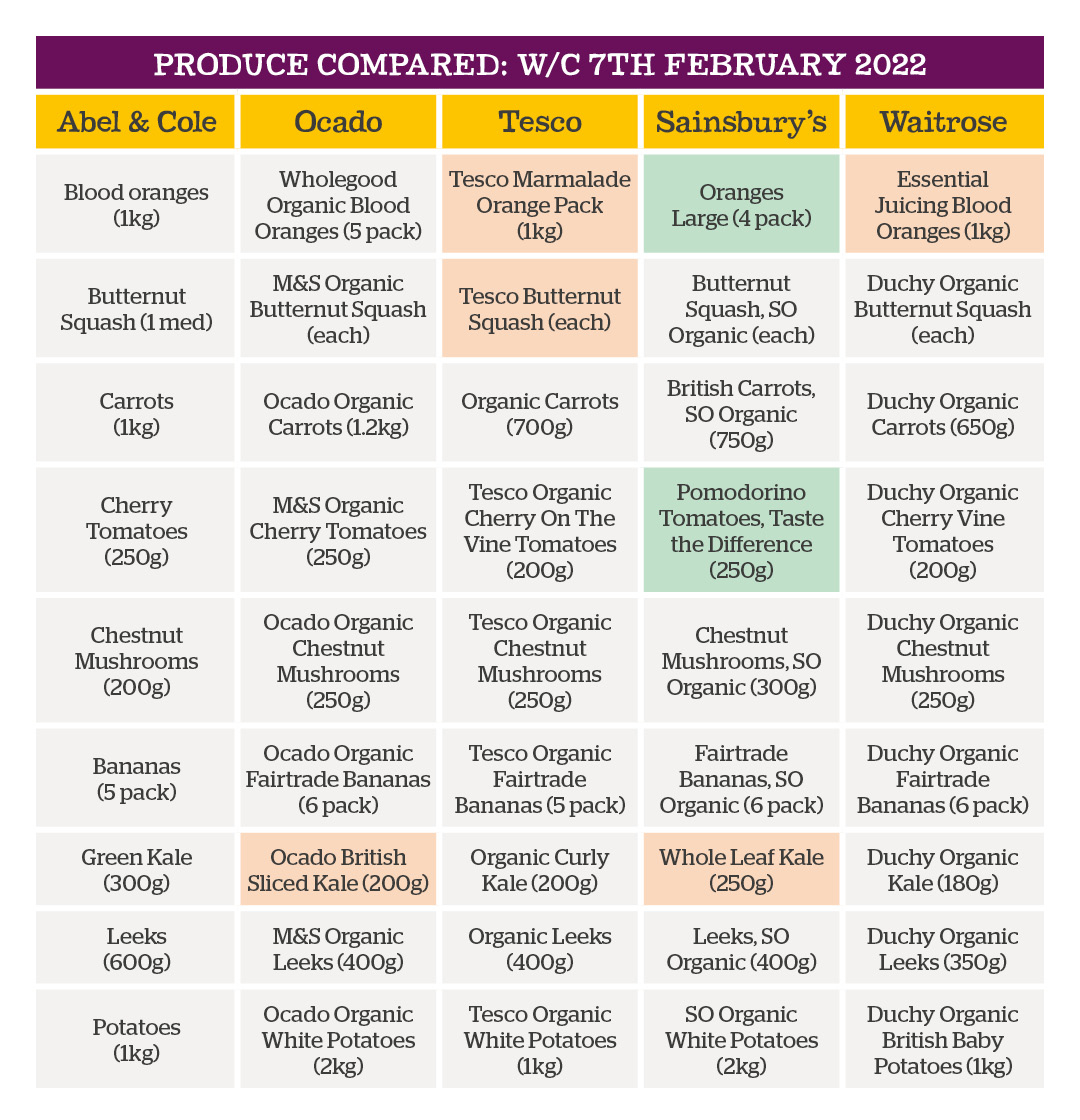
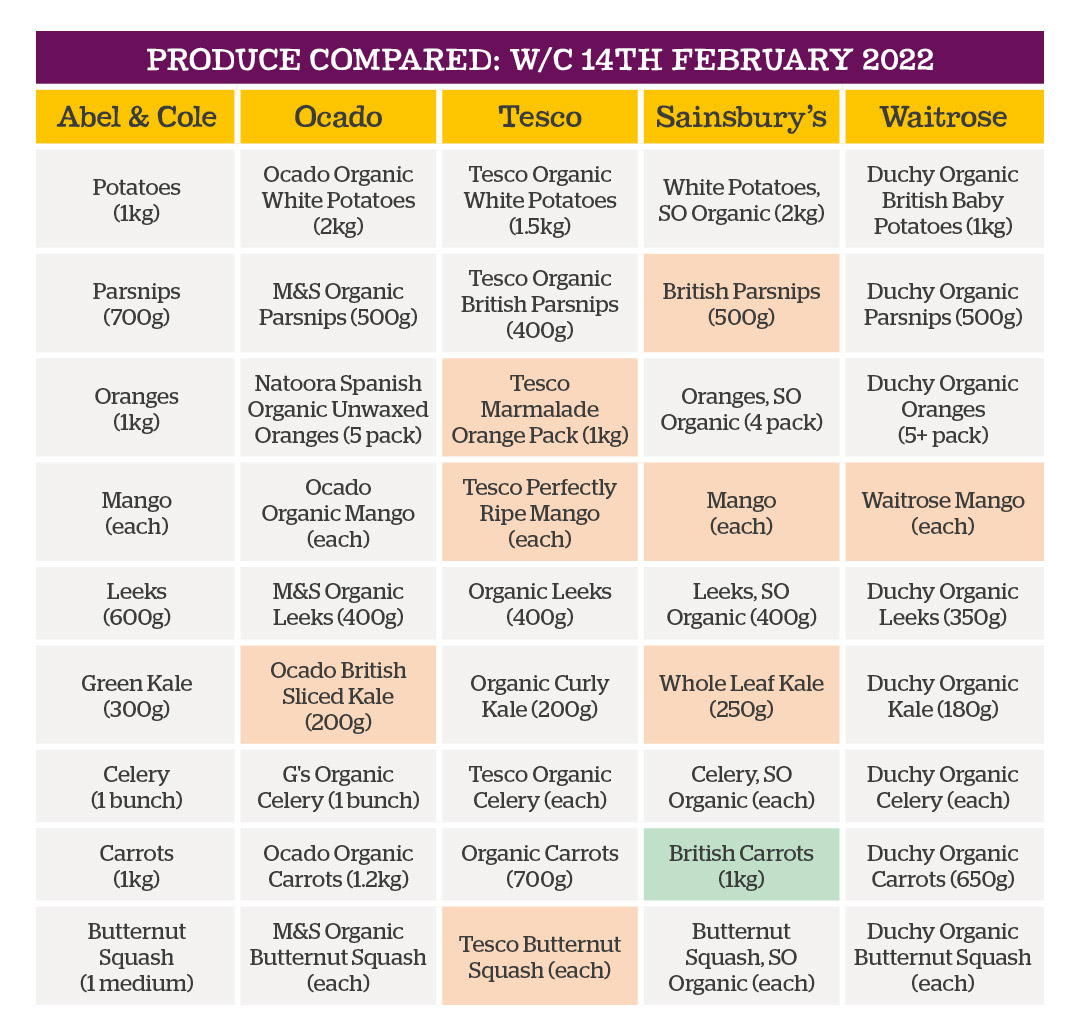
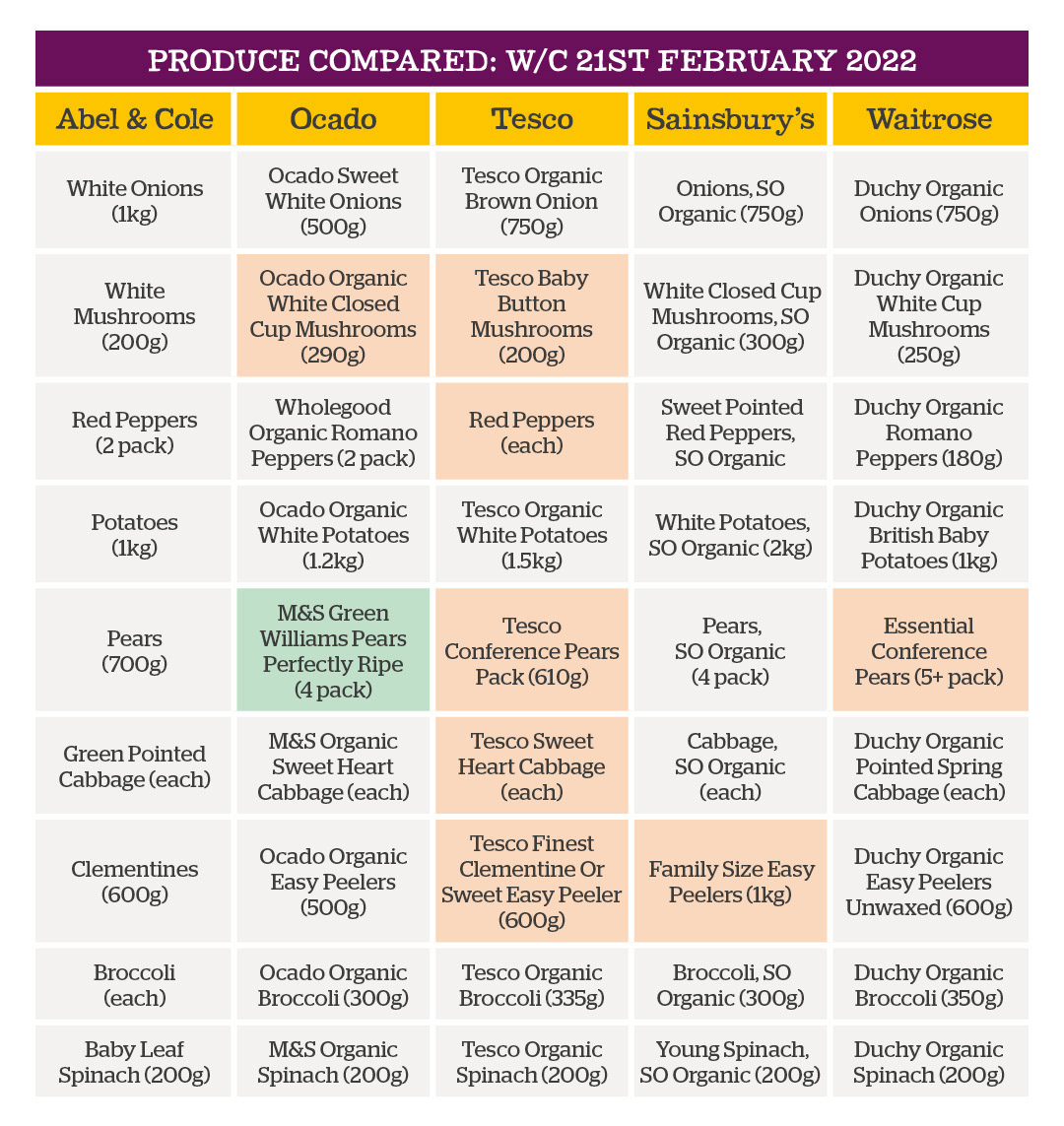
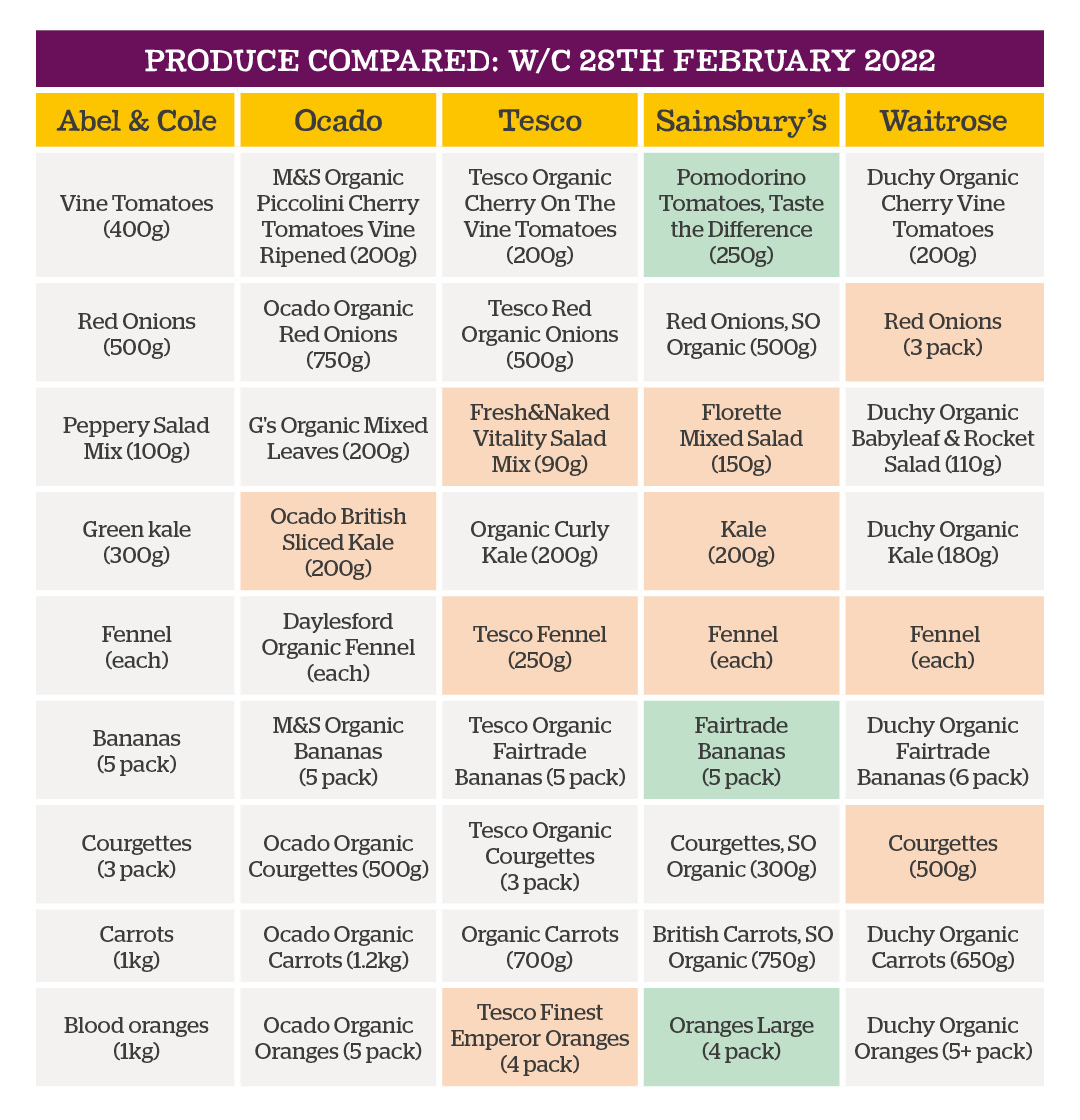
Below are the week-by-week results of our February 2022 study, which recorded the following metrics: the total amount of plastic (g), the total amount of paper (g), the total amount of other packaging (g), the total number of pieces of packaging, the total number of pieces of plastic, and the total weight of all the packaging combined (g). Find the week-by-week results of our August 2021 study, here.
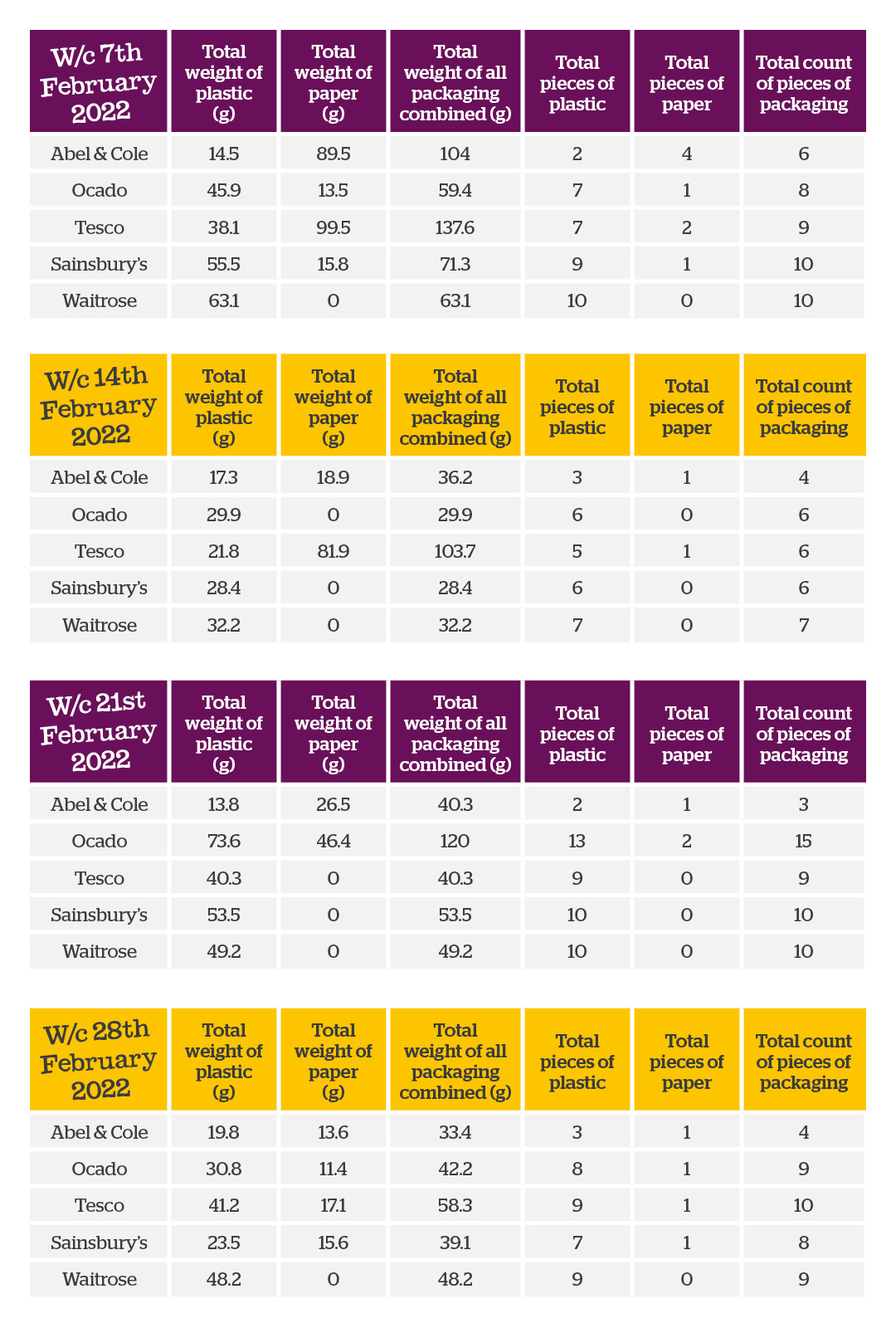
Find the total results of our August 2021 study, here.
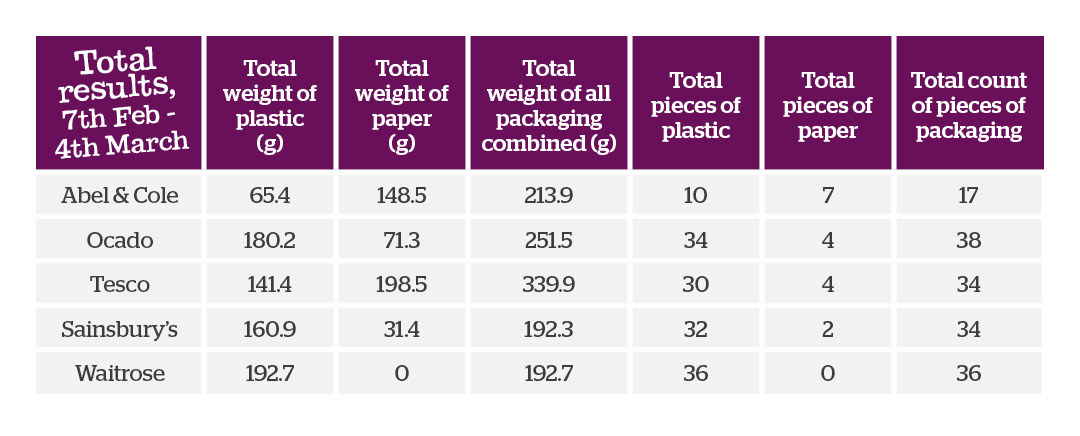
Based on the average from these two four-week comparisons, conducted in August 2021 and February 2022, we’re incredibly proud to say that our organic Fruit & Veg Boxes contain 77% less plastic.

From our August 2021 study, we found that our Fruit & Veg Boxes contained 84% less plastic than four major supermarkets. Using the same methodology, our February 2022 study found that we used 70% less plastic packaging in our Fruit & Veg Boxes, compared to the same four supermarkets – with a total of 10 pieces used in our boxes, compared to a total of 30 pieces from our nearest competitor. This represents a 14% increase in plastic packaging between August and February, but a similar rise was also found across the other supermarkets, owing to seasonal changes.
By combining the results from both of these studies, we have been able to generate an even more accurate percentage figure for the amount of plastic used in our boxes (77% less on average) over the course of the year.
If you’re feeling inspired to make a switch to a more sustainable food delivery, choose one of our weekly, organic Fruit & Veg Boxes, here.
Published April 2022


